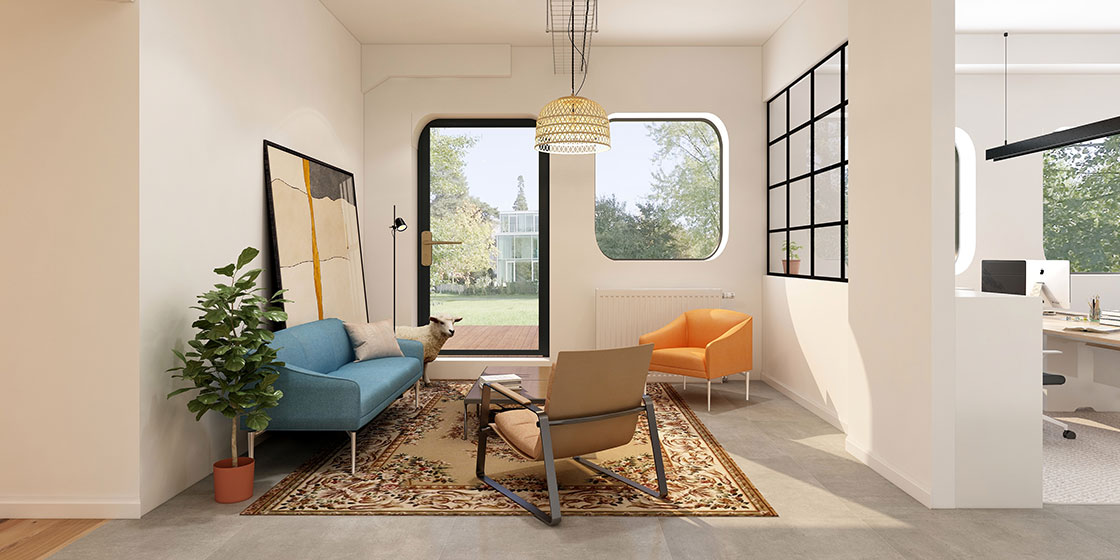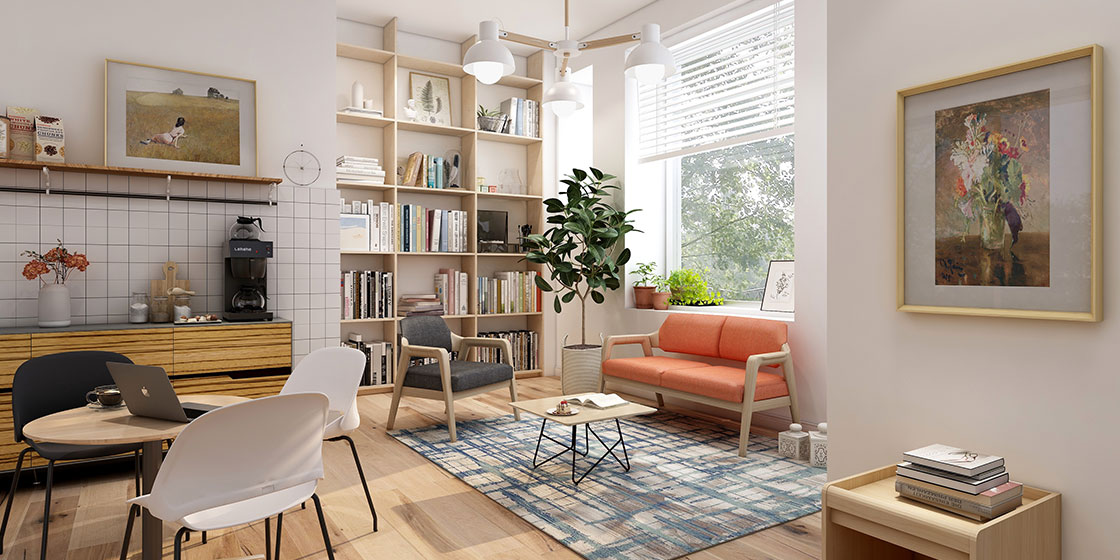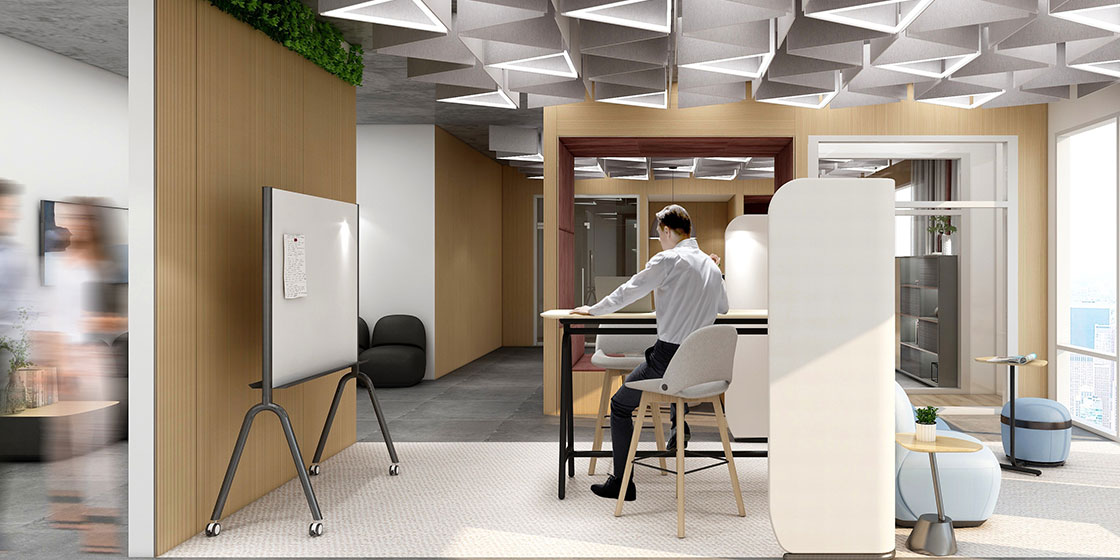
Are your staff happy and comfortable in their jobs? If not, what is the reason? The answer to both questions has a lot to do with the design psychology of your office.
Human-centric workplaces that foster attention and cohesiveness while offering comfort and stimulation are the goal of many businesses. Companies must go above and beyond to make employees feel at ease in their workplace, allowing them to succeed while also socializing, making connections, and building relationships.
The physical and social aspects of an office can have a massive impact on the well-being of a person. The psychology of workplace design should take into account the physical and emotional consequences on employees. We'll look at it a bit more closely in this section.

The Café experience
Consider your favorite coffee shop's interior design and atmosphere. The lighting is often soft and pleasant. Tables and chairs, seating spaces with cushioned chairs, counters, and stools make up the mix of furniture and settings. Other features may be newspapers and magazines on side tables, books, and perhaps board games.
These settings are intended to elicit sentiments of comfort and relaxation in us. Above all, they're meant to help us feel more connected to the environment and the people around us. The same principles apply in the workplace as well, with the ultimate objective of making people feel better and encouraging them to collaborate and achieve goals.
Home away from home
Employees are more inclined to spend more time in a workplace that is less formal and more pleasant since they do not feel confined. Employees are more comfortable and happy when the design of the office is modeled by that of residential space. When employees have a say in how their workspaces are used, they respond positively. Many organizations are allowing employees to choose when and how they work, and as a consequence, employees are happier, more productive, and see their employer as more forward-thinking than competitors.

Personality types
'One size does not fit all,' and recognizing the characteristics and preferences of diverse user groups is crucial to establishing workplaces that promote employee well-being. These distinctions can be based on the activity, how a person wants to work, and their personality, which could explain why some individuals flourish in open or agile workspaces while others are easily distracted in shared workplaces. Creating environments with different personality types in mind can help with a variety of cognitive inclinations, which may influence eye movement towards activity, or increase awareness of personal space.
The need for flexibility
A well-designed office fosters creativity and autonomy. An activity-based working (ABW) workplace considers both extroverted and introverted employees, provides workspaces for a range of tasks, incorporates employee feedback into the design, and outperforms traditional and rigid offices. Employees have the opportunity to pick what works best for them in this atmosphere, which increases trust and satisfaction. This emphasizes the necessity of meeting people's needs and designing spaces that adapt to changing office dynamics.

The right questions
Is the environment welcoming to all?
Does it make employees feel like they're a member of a team that's working on something important?
Does the space capture the essence of your organization?
Do your staff feel at ease and connected in their work environments?
Are they making proper use of the available space?
Has the workplace been creatively altered and optimized to meet their needs?
If you answered no to any of these questions, the next step is to figure out why and that is our beginning point for determining the design adjustments you need to create a good office and focusing on the design that will best link your employees to your business.